4 Tips for Wedding Homilies
I just preached at the wedding of a dear friend’s eldest child. It was a beautiful (if not chilly and windy!) outdoor ceremony in Minnesota.
In the preparations, I was reminded of a few important realities about this special event. I hope you find these tips helpful and would love to hear your thoughts as well.
1) Preachers Have an Audience of Two: The Couple
The couple are the only two people who matter. The homily is for them, and them alone.
It’s about their marriage, the marriage only the two of them will inhabit.
The homily focuses on what is particular to them and their relationship to which their chosen Scripture texts relate.
To prepare, here are a few questions to ask them:
Why are they choosing a religious service?
Who and where is God for them in their chosen text?
What are their hopes and dreams?
What struggles have they overcome that can help them trust in God and each other when struggles come again?
Who do they envision they will become because of this marriage?
2) Don’t Co-opt the Homily as a Chance to Evangelize
I say this for three reasons.
a) It’s disingenuous to the ceremony. The liturgy is not designed to be an altar call. It’s designed to join two people in holy matrimony with God’s blessing. Period.
b) It’s disingenuous to the couple. They are not props for a second agenda. The homily is about no one but them.
c) If the homily is well crafted it stands on its own to proclaim the gospel and does its own work.
3) Keep in Mind Those Who Overhear
At the wedding I just preached at, in attendance were Roman Catholic, Lutheran, Assemblies of God, Muslim, the spiritual but not religious, divorced, single, newly married, engaged, and remarried.
And those are just the ones I know about.
In other words, it was a typical wedding!
While the homily is focused on the couple, we hope those gathered will listen deeply.
It is an act of hospitality on behalf of the couple that those they invited understand the homily.
That means we need to be intentional to keep the homily relevant and not alienate.
For example:
Don’t assume attendees understand insider church language, like “means of grace,” or “hope of glory.”
Don’t assume biblical literacy. For instance, a reference to “the miracle at the wedding in Cana” when that isn’t the gospel reading won’t be known or understood by many.
Don’t offer an exegesis. This isn’t a “teachable moment” about the bible, church history, or the marriage rite.
Don’t inadvertently shame. Weddings heighten emotions for many, and they will bring with them the pain of broken relationships, both marital and familial, past and present. After crafting the homily draft, look it over through their eyes. What might they hear? Would it sound welcoming or healing, for example, to a divorced person?
4) Keep It Short
No one, absolutely no one, attends the wedding for the homily.
There’s only one reason they’re there: to celebrate the couple.
The homily sets the context for and blesses this as a Christian marriage and helps the couple frame their relationship as a commitment that mirrors God’s commitment to us.
Moreover, the homily doesn’t have to do any heavy-lifting. The work of the liturgy frames the purpose of the vows they will make in the name of God. As the vows come after the homily, people are eager to get onto the main event.
The truth is, some will listen and fewer will remember the words—but they will remember how the homily made them feel and whether or not it related to the couple.
And that’s the way it should be.
Available to the public for the first time ever!
The Sermon 52 Framework is BsP’s spiritual practice to craft an authentic, effective sermon 52 weeks a year.
For the first time ever, this one-hour teaching series—the foundation of our popular Start-to-Finish sermon prep workshops and the anchor of Sermon Camp—is available to the public!
This process, both spiritual AND practical, will transform your preaching prep.
If you’ve participated in a Start to Finish, purchasing the framework will ensure you have access to the videos, grid, and other exercises forever.
Plus, there are bonuses never before available. For a limited time, just $27.00 for preaching and for life!

